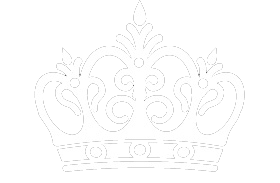Emerald Quality Factors
- kukkikja
- Dec 1, 2016
- 4 min read

Emerald has many special qualities, but colored stone professionals generally agree that emeralds are, most of all, about color. Emerald has been the standard for green among colored stones for thousands of years. As with other colored stones, it requires a well-trained eye to recognize the sometimes subtle variations that make significant differences in emerald value. This is especially true in the higher qualities.
Color
The most desirable emerald colors are bluish green to pure green, with vivid color saturation and tone that’s not too dark. The most-prized emeralds are highly transparent. Their color is evenly distributed, with no eye-visible color zoning. If the hue is too yellowish or too bluish, the stone is not emerald, but a different variety of beryl, and its value drops accordingly. The intensity of the green in the finest emeralds might not be equaled by anything else in nature. Chromium, vanadium, and iron are the trace elements that cause emerald’s color. The presence or absence of each and their relative amounts determine the exact color of an emerald crystal. Emerald appearance is sometimes associated with its mine location. Colombian emeralds are said to have a warmer and more intense pure green color. Zambian emeralds are said to have a cooler, more bluish green color. In spite of these theories, the truth is that emerald appearance overlaps between sources.
Clarity
Emeralds typically contain inclusions that are visible to the unaided eye. Because of this, trade members and some consumers understand and accept the presence of inclusions in emeralds. Eye-clean emeralds are especially valuable because they’re so rare. Emerald inclusions are often described as looking mossy or garden-like. They’re sometimes called “jardin,” which is French for garden.
In colored stones, transparency and clarity are closely linked. This is especially true for emeralds. The trade generally accepts eye-visible inclusions in higher-quality emeralds. But when the inclusions have a negative effect on transparency and clarity, they also dramatically reduce value
In early 2000, the GIA Laboratory began offering a classification service for emerald clarity treatments. The laboratory examines a loose stone and provides an Emerald Report that includes a digitally generated color image of the stone taken at the time it’s examined. The report describes the level of clarity enhancement as minor, moderate, or significant. The GIA Laboratory emphasizes that it uses the classification system only to evaluate the level of treatment, and not to offer an overall clarity grade for the stone. Cut
The cutter must consider the rough’s depth of color, durability, and inclusions when making cutting decisions. Mistakes cause weight loss, which greatly reduces the value of a potentially valuable gem. Four characteristics of emerald crystals make them difficult to cut. First, almost all emeralds have significant fractures (sometimes called fissures in the trade). A cutter must design the cut to minimize the effect of those fractures on the finished stone. The second factor is due partly to those inherent fractures: Emeralds are more brittle than a gem like corundum. This makes them vulnerable to damage during cutting, polishing, and setting, or even during careless daily wear. The emerald cut can help protect against damage because the vulnerable corners are faceted and provide a comparatively safe place for prongs. Third, because color is so important in establishing an emerald’s value, the cut must maximize the effect of hue, tone, and saturation. The cutter can affect color by adjusting an emerald’s proportions and number of facets. The cutter can darken a pale stone with a deep cut, a small table, and fewer facets, or lighten a dark stone with a shallow cut, a large table, and additional facets.
Fourth, the bluish green to yellowish green dichroism of many emerald crystals encourages the cutter to orient the table so it’s perpendicular to the crystal’s length. That way, the more apparent color in the cut gem is the bluish green that so many emerald lovers prize. Colombian rough is especially challenging due to the distribution of coloring agents during formation. Its color is more intense closer to the surface. Without careful planning and cutting, the finished stone might be much lighter in color than the original material. Carat Weight
Fashioned emeralds come in a wide range of sizes. There are emeralds in museums and private collections that weigh hundreds of carats. At the other extreme are tiny emeralds that weigh fractions of a carat. The Sandawana emerald mine in Zimbabwe is known for its tiny, yet vividly colored stones. Its emeralds are as small as 1 mm square, but they’re still intensely green. The mine’s cut stones average about 0.05 to 0.25 carat, and rarely weigh more than 1.50 carats. Popular jewelry sizes are usually somewhere in between.
The smallest sizes range from 1 mm to 5 mm, with weights from 0.02 to 0.50 carat, while 1 to 5 carat stones are popular as center stones. Prestigious pieces of jewelry can include emeralds that weigh over 20 carats. Quality-for-quality, the price of emerald can rise dramatically as the size increases.
Source : Gemological Institute of America Inc.(GIA)

























Comments